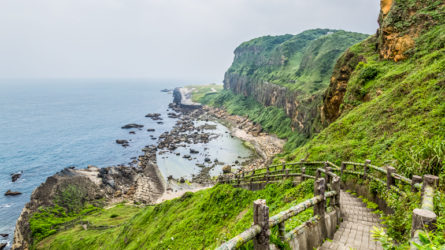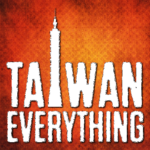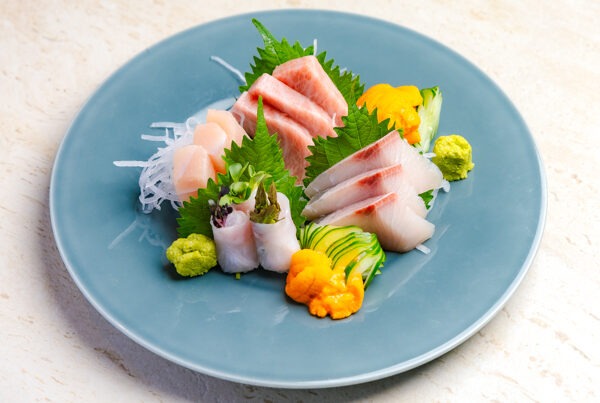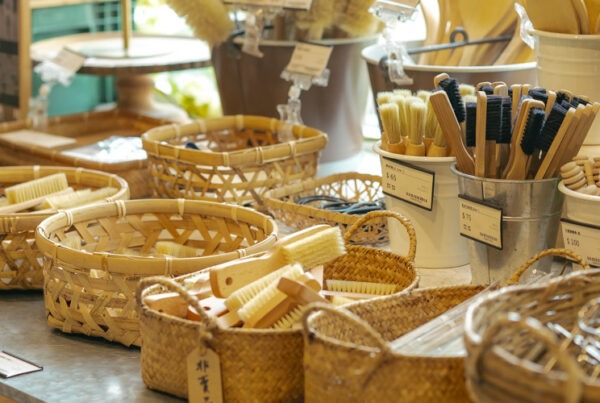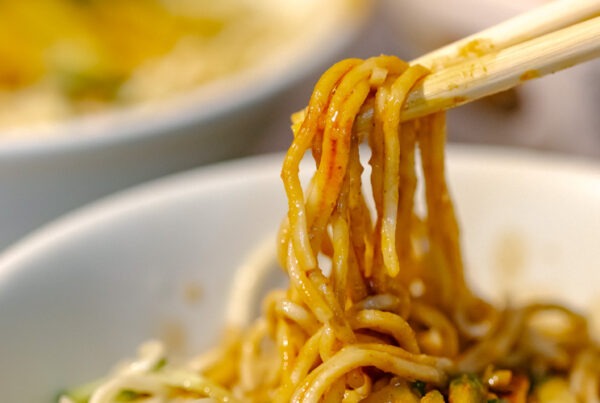Digging Up Nuggets of History in Jinguashi, a town by the Northeast Coast
Text: Han Cheung; Photos: Vision
Somewhat hidden away from the popular tourist draw that is the town of Jiufen, but easy to reach by public bus, Jinguashi is much quieter and laid-back than its more prominent neighbor. Its main attraction is the very informative and educational Gold Museum, which introduces you to the times when gold–diggers went deep into the local mountainsides in search of this and other precious metals.
No, you won’t be able to take home that 999.9% pure gold brick, even if you tried – the 220kg behemoth was once holder of the Guinness record for largest pure-gold bar. But you’ll at least be able to leave with some gold dust.

The Gold Museum in Jinguashi
Visitors to the Gold Museum in Jinguashi can try their hand at panning gold right outside the Benshan No. 5 Tunnel, where gold miners toiled between 1897 and 1972. They can also visit a stretch of the tunnel to get a taste of mining work, augmented with a display of wax figures and explosion sound effects.
The museum grounds, spread over a wide area and featuring numerous facilities, constitute the former business area and Japanese quarters of the Jinguashi gold and copper mine district in New Taipei City’s Ruifang District. Jinguashi and its better-known neighbor Jiufen, after long thriving as industry towns, suffered after the closure of their mines in the 1970s and ’80s. Both have since turned to tourism. Compared with the endless stream of visitors in Jiufen, however, Jinguashi is much quieter and retains a raw charm, as if frozen in time.

After the end of mining operations, the town of Jinguashi languished until 2004, when the New Taipei City Government, along with Taiwan Power Company and Taiwan Sugar Corporation, established the Gold Museum to restore and revive the area.
From Japanese-style wooden dormitories to the abandoned narrow-gauge train tracks on the mountainside, selfie opportunities abound at the mostly open-air and admission-free Gold Museum. However, museum director Wang Chin-hua hopes that people take their time to also check out the exhibits and learn about the history of the area.
“Many visit the museum just for the Japanese atmosphere and the mountain scenery,” Wang says. “We hope that more people will come to understand the history of the mining industry as well as our preservation efforts.”
From the Jinguashi bus stop (see Getting There section), it’s just a short walk to the museum’s Tourist Information Center, which is housed inside the former inter-town bus station. From here a red-brick path lined with red-brick walls takes you past the historic Shiyu High School, established in 1907 for the Japanese children in the area. Taiwanese children attended nearby Guashan Elementary School.

The charming, minimalistic Japanese architecture and paths of dark pebble and brick make the museum grounds a joy to wander about. Gold was discovered in this area around 1890, leading to a gold rush with panners from all around Taiwan coming to seek their fortunes. When the Japanese took over Taiwan in 1895, they restricted mining rights to Japanese only – and serious mining operations officially began in 1897.
In another heritage structure, the Gold Refining Building, originally used by the Japanese as a guesthouse and later as a gold-refining facility, an exhibit of old photos tells the story of Jinguashi’s rise and fall, the mining-industry’s end arriving in 1987 when financial problems forced the facilities to close. The black-and-white photos, provided by Jinguashi residents, are grouped by donors, and each display details their personal experiences.
“We even had former Japanese residents who left Taiwan after World War II return just for this exhibition,” Wang says.
Two of the museum’s main attractions are the Four Joined Japanese-Style Residences and the Crown Prince Chalet. The first are classical-style Japanese wooden structures that have been used as sets for movies in the past. The latter was built to host then Crown Prince Hirohito on a planned visit to Jinguashi. The lovely chalet comes complete with a beautifully landscaped Japanese-style garden.

From the lower levels of the museum, walk uphill to explore the narrow-gauge train-track area and the Gold Building (admission NT$80). This three-story building formerly housed the offices of the Taiwan Metal Mining Corp. On the first floor you can have a look at a model of the Benshan tunnels, the second floor provides you with an introduction to the special features and applications of gold, including the massive gold brick mentioned in this article’s opening, and on the third floor is a gift shop where you can buy souvenirs related to gold mining.


The Benshan No. 5 Tunnel is well worth the extra payment (NT$50), providing a taste of the miner’s environment, although visitors only get to explore a fraction of the site’s network of tunnels. Also worth paying extra for is the gold-panning experience (NT$100) – it’s a strange exercise, during which you have to keep reminding yourself that gold, 19.3 times denser than water, will not float away as easily as you think when you swirl that small pan of sand underwater. The sand, of course, is also much lighter than the gold.


The museum area contains several eateries – most notably the Miner’s Café, which offers miner-theme lunchboxes (pork chop on rice, along with other goodies) in a traditional container wrapped in cloth. Visitors can either eat in the traditional wooden building or in covered booths in the adjacent plaza.
Those feeling more adventurous can head further up the mountain to the remains of the Jinguashi Shrine, a place of worship built in 1897 to protect the miners during their dangerous work in the tunnels. The Shinto shrine was moved to the current location from another site and was expanded in 1933. All that’s left now is a stone torii (gate), stone lanterns, and stone pillars, creating an eerie setting – with fantastic views of the sea in the distance and the verdant coastal mountains.

Beyond the Museum
Director Wang hopes that visitors stay in Jinguashi longer than the usual two-hour slot allocated by tour companies – which is about the time it takes to finish touring the museum.
“The mining district was quite large,” he says. “There are tons of other tangible and intangible cultural relics scattered through the area. We hope that people at least stay a full day, to explore more of the surrounding area.”
The museum periodically holds in-depth tours of Jinguashi, notably the town’s main residential area, guided by locals who share with visitors their personal memories of living here.
Immediately outside of the museum grounds is Jinguashi Old Street, which provides a stark contrast to neighboring Jiufen’s bright lights and constant tourist hustle. A twisting maze of concrete steps and wood-and-brick structures with asphalt roofs, it’s perfect for an afternoon stroll. Don’t expect the amenities of Jiufen, though – the street has just a handful of businesses, including several cafés.
“It’s one of the few ‘old streets’ in northern Taiwan that hasn’t experienced a revival,” Wang laughs. “But that’s what makes it stand apart.”
Overlooking the area is Quanji Temple, notable for the giant statue of Guanyu, the God of War, on its roof. From there – and also from near the Gold Building – trails head up to Teapot Mountain, family-friendly hikes ending with remarkable views of the mountains surrounding Jinguashi.

Close to Quanji Temple is the Taiwan POW Memorial Park, built to honor the Allied soldiers who were captured by the Japanese and held in numerous POW camps across the island. About 1,100 soldiers slaved in the copper mines in the Jinguashi area from 1942 to 1945.
If you take the main road down from Jinguashi to the coast (County Road 34), you’ll pass the beautiful Golden Waterfall, and then come to the coast-side community of Shuinandong, which came into existence because of the “Thirteen Levels” copper refinery. Now abandoned, this massive, haunting, vegetation-covered complex – easily spotted from the coastal highway –looks like a concrete, modernist version of a ruined mountain palace.

Kids will love the 9.6m-long, two-story-high stone slide on Shuinandong’s Liandong Elementary School campus, and from there visitors can also look out to the two-colored Yin Yang Sea, the local shallow-bay waters, which are blue and yellow due to the high concentration of minerals carried down from the mountains by the Golden Waterfall stream.

Wang says the museum will start actively promoting some of the above sites to tourists in the future.
“Many people think that the only attraction in the area is our museum,” Wang says. “But that won’t help much with opportunities for the surrounding communities, where members of the recent generations have mostly left for Taipei. Many homes here are empty.”
From Shuinandong, you can continue your exploration of Northeast Coast attractions by following the coastal highway (Provincial Highway 2) eastward. Nanya’s strange rock formations, Bitou Cape, Longdong Bay, and Fulong Beach are among the many popular places to visit along this amazingly scenic stretch of coast.

KLOOK
Jiufen Village & The Northeast Coast
Places to stay in Ruifang District (booking.com)
The Gold Museum is open Mondays to Fridays from 9:30am to 5pm, weekends from 9:30am to 6pm. Admission is free except for the Gold Building (NT$80); extra fees are required for the gold-panning experience (NT$100) and visiting Benshan No. 5 Tunnel (NT$50).
Self-Drive: From Taipei, take National Freeway 1 heading to the city of Keelung, switch to Provincial Highway 62 (an expressway), then take County Road 102 to Jiufen and from there County Road 34 to Jinguashi. From Keelung or Yilan, simply take Provincial Highway 2 (the coastal highway) to Shuinandong and then Road 34 uphill to Jinguashi.
By Bus: There is a direct bus service (No. 1062) from close to Exit 1 of MRT Zhongxiao Fuxing Station in Taipei to Jiufen/Jinguashi. Alternatively, take a train to Ruifang Railway Station and from there a Taiwan Tourist Shuttle bus (No. 856; Gold Fulong Route) to Jiufen/Jinguashi. The bus continues down to the coast and all the way to Fulong. (Note that the bus stop is about 100 meters to the left along the main road after exiting Ruifang Railway Station.)
Add: No. 8, Jinguang Rd., Jinguashi, Ruifang District, New Taipei City
(新北市瑞芳區金瓜石金光路8號)
Tel: (02) 2496-2800
Website: www.gep.ntpc.gov.tw
Watch from 4:25 mark:
Related articles
The Rugged Northeast Coast
5 Things to Do in JIUFEN/JINGUASHI
JIUFEN Hiking — Mountains in Northeast Taiwan


